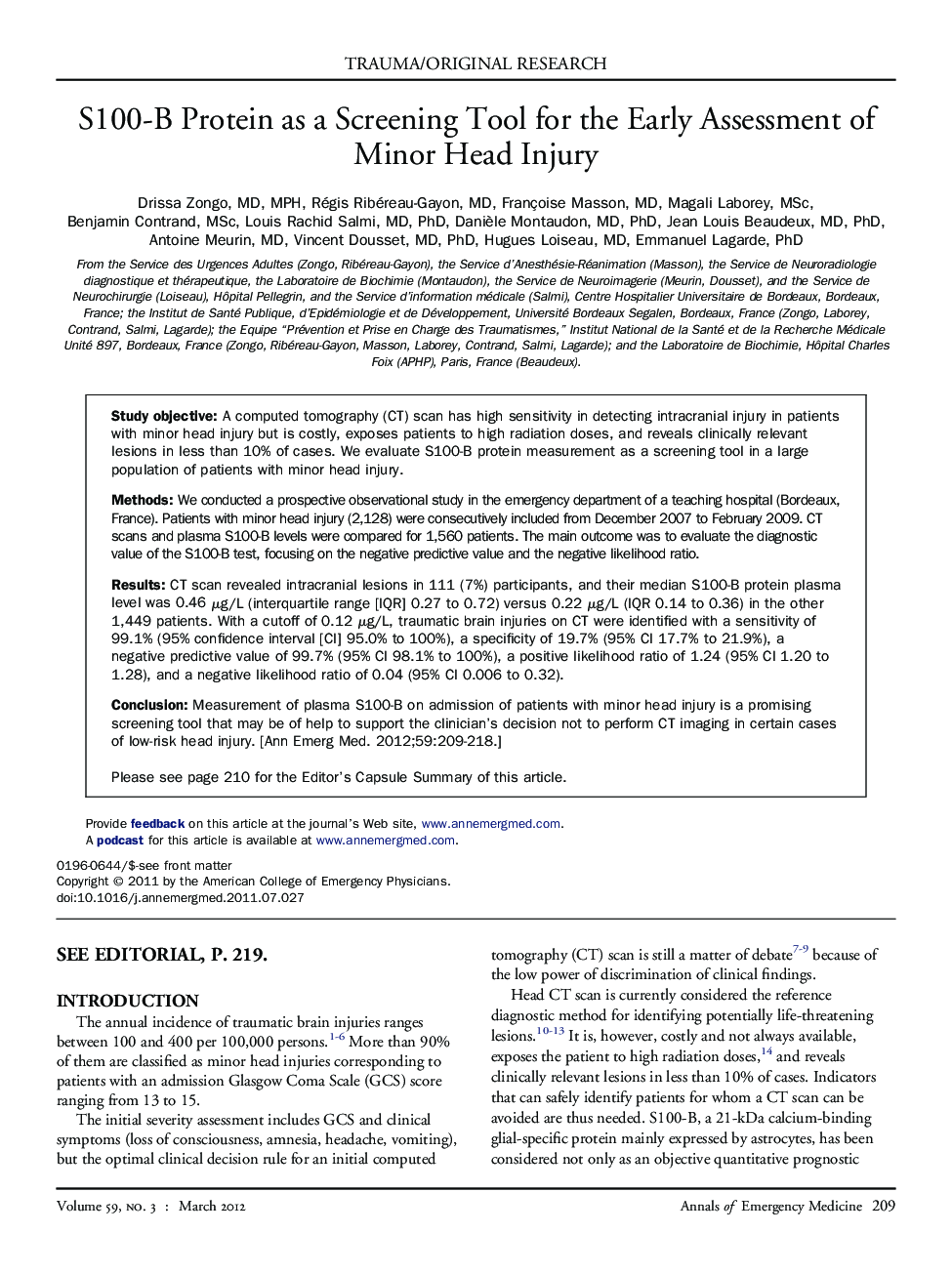| Article ID | Journal | Published Year | Pages | File Type |
|---|---|---|---|---|
| 3230544 | Annals of Emergency Medicine | 2012 | 10 Pages |
Study objectiveA computed tomography (CT) scan has high sensitivity in detecting intracranial injury in patients with minor head injury but is costly, exposes patients to high radiation doses, and reveals clinically relevant lesions in less than 10% of cases. We evaluate S100-B protein measurement as a screening tool in a large population of patients with minor head injury.MethodsWe conducted a prospective observational study in the emergency department of a teaching hospital (Bordeaux, France). Patients with minor head injury (2,128) were consecutively included from December 2007 to February 2009. CT scans and plasma S100-B levels were compared for 1,560 patients. The main outcome was to evaluate the diagnostic value of the S100-B test, focusing on the negative predictive value and the negative likelihood ratio.ResultsCT scan revealed intracranial lesions in 111 (7%) participants, and their median S100-B protein plasma level was 0.46 μg/L (interquartile range [IQR] 0.27 to 0.72) versus 0.22 μg/L (IQR 0.14 to 0.36) in the other 1,449 patients. With a cutoff of 0.12 μg/L, traumatic brain injuries on CT were identified with a sensitivity of 99.1% (95% confidence interval [CI] 95.0% to 100%), a specificity of 19.7% (95% CI 17.7% to 21.9%), a negative predictive value of 99.7% (95% CI 98.1% to 100%), a positive likelihood ratio of 1.24 (95% CI 1.20 to 1.28), and a negative likelihood ratio of 0.04 (95% CI 0.006 to 0.32).ConclusionMeasurement of plasma S100-B on admission of patients with minor head injury is a promising screening tool that may be of help to support the clinician's decision not to perform CT imaging in certain cases of low-risk head injury.
